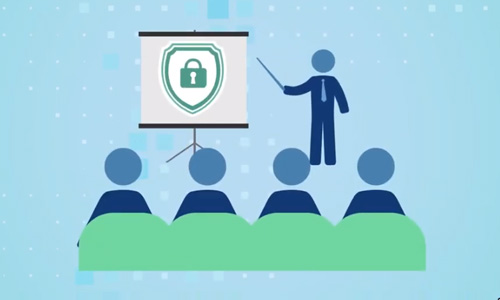This criterion requires a company and its person in charge to possess good reputation, and strictly abide by the law. They shall have a clear record of Customs offences or other offences involving fraudulence, corruption or dishonesty, or offences under Safeguarding National Security Ordinance in the past two years.
You have completed all questions under Criterion (A), please click "Next" to proceed to Criterion (B).
Please answer all questions.
Customs Officers will contact your company for obtaining relevant document if necessary.
This criterion requires a company to manage important commercial records securely and systematically, and guarantee the completeness and accuracy of records, especially those relating to the importation or exportation of goods, licenses, permits, etc.
You have completed all questions under Criterion (B), please click "Next" to proceed to Criterion (C).
Please answer all questions.
This criterion requires a company to have its financial status sound and strong enough to withstand external risks, demonstrate resilience during global crisis and maintain the security of supply chain at all times.
You have completed all questions under Criterion (C), please click "Next" to proceed to Criterion (D).
Please answer all questions.
Customs Officers will contact your company for obtaining relevant document if necessary.
This criterion aims to ensure the security of premises and prevent unauthorized entry. A company shall have security procedures and install security devices to safeguard its premises such as offices, warehouses, customer service centres, etc.
You have completed all questions under Criterion (D), please click "Next" to proceed to Criterion (E).
Please answer all questions.
This criterion requires a company to have an effective employee management system ensuring various policies and procedures of the company are thoroughly carried out, the standards of internal management and the security of the supply chain are alleviated.
You have completed all questions under Criterion (E), please click "Next" to proceed to Criterion (F).
Please answer all questions.
This criterion aims to ensure the integrity and security of cargo. To prevent cargo from being tampered, a company shall devise security procedures on cargo related aspects, such as cargo handling, on-site supervision, and regular audit. Alternatively, it can add these cargo security elements within its existing cargo handling guidelines.
You have completed all questions under Criterion (F), please click "Next" to proceed to Criterion (G).
Please answer all questions.
This criterion aims to prevent cargo from being tampered during transportation through management, inspection, and training.
You have completed all questions under Criterion (G), please click "Next" to proceed to Criterion (H).
Please answer all questions.
This criterion aims to strengthen the international supply chain security through the commitments of business partners. A company shall select business partners through screening, require business partners to agree on security terms and review performance of business partners regularly. These requirements shall be laid down as written procedures. Business partners include conveyance contractors, warehouse contractors, freight forwarders or other contractors related to the supply chain.
You have completed all questions under Criterion (H), please click "Next" to proceed to Criterion (I).
Please answer all questions.
This criterion aims to ensure that staff are aware of a company"s security policies through a training system and thus guarantee the effective execution of the policies.
You have completed all questions under Criterion (I), please click "Next" to proceed to Criterion (J).
Please answer all questions.
This criterion aims to ensure that important information is protected from misuse, unauthorized access or alternation. A company shall have security policies on its information systems and protect its information through different security measures, data backup and routine monitoring.
You have completed all questions under Criterion (J), please click "Next" to proceed to Criterion (K).
Please answer all questions.
This criterion aims to minimize the impact created by disasters or security incidents through managing crisis and recovery, and requires a company to set up a complete contingency plan.
You have completed all questions under Criterion (K), please click "Next" to proceed to Criterion (L).
Please answer all questions.
This criterion aims to improve a company"s security policies and practices, and reduce potential risks through implementing a security management system.
Please answer all questions.

